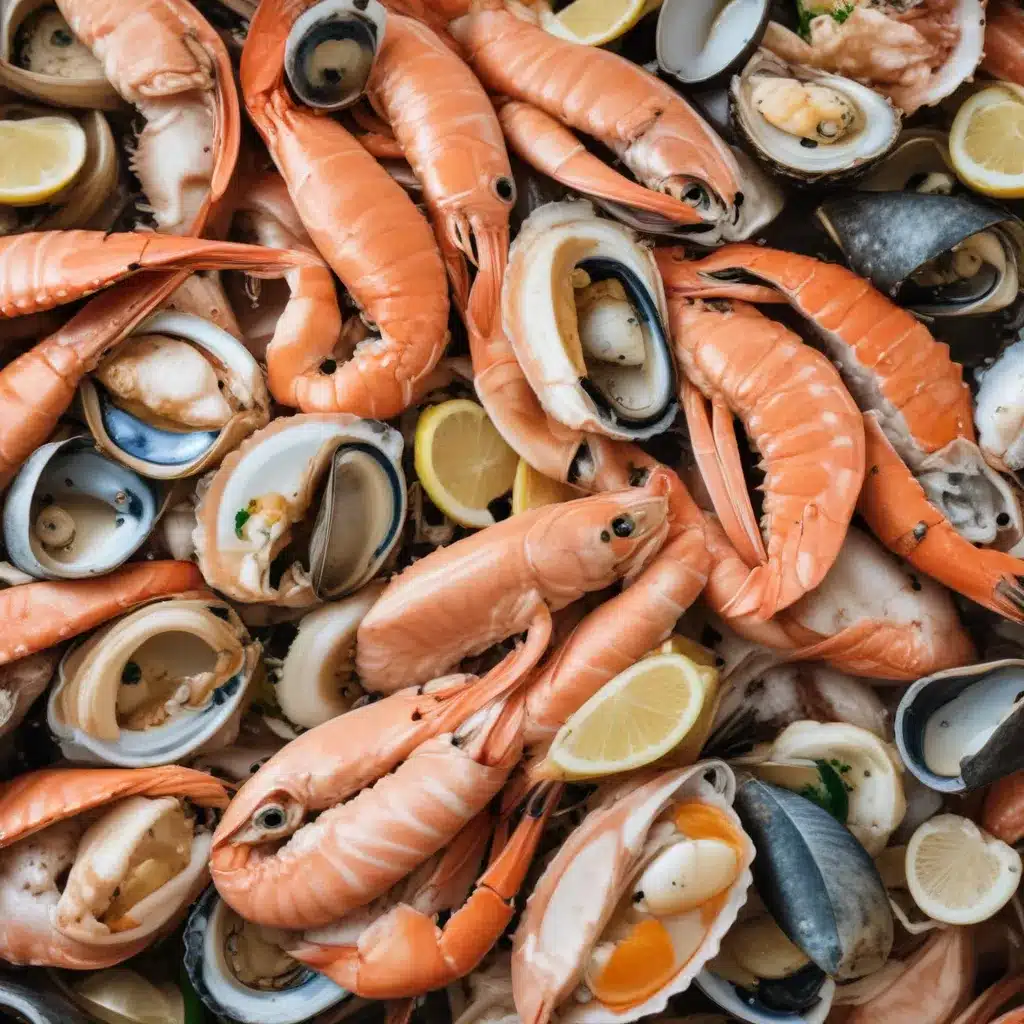
As a seafood dining expert, I understand the importance of unlocking the full potential of our oceanic treasures. When it comes to enjoying the robust flavors and optimal nutrition of fish and shellfish, proper storage is paramount. From the moment these proteins leave the waters, their lifespan is a delicate balance – one that requires strategic handling to preserve their freshness and quality.
The Science of Seafood Preservation
Seafood longevity is governed by a trifecta of environmental factors: temperature, packaging, and humidity. Mastering the interplay of these elements is the key to extending the shelf life of your cod, salmon, shrimp, and beyond.
Factors Influencing Seafood Longevity
Temperature Control: Perhaps the most critical factor, temperature regulation is a seafood connoisseur’s best friend. Elevated temperatures accelerate the growth of spoilage bacteria and enzyme activity, while extreme cold can preserve delicate proteins and cellular structures. Finding the Goldilocks zone is essential.
Packaging Techniques: Innovative packaging solutions, from vacuum sealing to modified atmosphere, shield seafood from oxidation, dehydration, and external contaminants. Proper packaging can extend the usable life of fish and shellfish by days or even weeks.
Humidity Management: Proper humidity levels are a delicate balancing act. Too much moisture can lead to microbial growth and freezer burn, while insufficient humidity causes dehydration and texture degradation. Optimizing this variable is crucial for maintaining that mouthwatering, succulent texture.
Proper Seafood Storage Practices
Refrigeration Considerations
Optimal Temperature Ranges: For fresh, unfrozen seafood, the ideal refrigeration temperature ranges between 32°F and 40°F (0°C to 4°C). This “chilled” zone inhibits the proliferation of harmful microbes while preserving the integrity of the proteins.
Freezer Storage Tips: When it comes to freezing, the lower the temperature, the better. Aim for a freezer setting of 0°F (-18°C) or below. This extreme cold greatly slows down enzyme activity and microbial growth, effectively “pausing” the aging process.
Packaging Solutions
Vacuum Sealing: Removing all oxygen from the package creates an anaerobic environment that stalls oxidation and bacterial growth. Vacuum-sealed seafood can last 2-3 times longer than their unwrapped counterparts.
Modified Atmosphere Packaging (MAP): This advanced technique replaces the air in the package with a custom gas mixture, often high in carbon dioxide. The altered atmosphere inhibits spoilage, prolonging freshness.
Humidity Regulation
Moisture Absorption: Minimizing surface moisture is crucial. Incorporating moisture-absorbing materials, like silica gel packs, can help prevent the dreaded freezer burn and texture degradation.
Ventilation Strategies: Adequate air circulation is also essential, as stagnant air can lead to the buildup of volatile compounds that hasten spoilage. Strategic placement of the seafood within the refrigerator or freezer ensures proper airflow.
Maximizing Freshness Through Handling
Pre-Purchase Precautions
Sensory Evaluation: Before bringing seafood home, visually inspect for signs of freshness, like bright, clear eyes, firm flesh, and a clean, briny aroma. Avoid any items that appear discolored, slimy, or foul-smelling.
Cold Chain Maintenance: Ensuring the “cold chain” – the unbroken temperature-controlled supply chain from ocean to kitchen – is critical. Keep an eye out for any breaks in the cold chain, as these can dramatically degrade quality.
Post-Purchase Storage
Refrigerator Placement: Once home, strategically place seafood on the coldest shelves of your refrigerator, away from the door. This helps maintain a consistent, chilled environment.
Shelf Life Monitoring: Pay close attention to the recommended use-by dates, and try to consume fresh seafood within 1-2 days of purchase for optimal taste and texture. Frozen items can typically last 3-6 months when stored properly.
Innovative Seafood Storage Technologies
Advanced Cooling Systems
Cryogenic Freezing: Utilizing ultra-low temperatures (around -320°F/-196°C) achieved through liquid nitrogen or other cryogenic agents, this method rapidly freezes seafood, minimizing ice crystal formation and texture degradation.
Thermoelectric Cooling: Compact, energy-efficient thermoelectric refrigeration units maintain precise temperature control, making them an ideal solution for specialty seafood storage or transport.
Smart Packaging Advancements
Antimicrobial Coatings: Innovative coatings infused with natural antimicrobial compounds help inhibit the growth of spoilage bacteria, mold, and yeast on the surface of packaged seafood.
Time-Temperature Indicators: These clever labels change color in response to time and temperature, providing a visual cue to the freshness and safety of the contents – a boon for both retailers and consumers.
Regulatory Considerations for Seafood Storage
Food Safety Guidelines
HACCP Implementation: The Hazard Analysis and Critical Control Points (HACCP) system, a proactive approach to food safety, outlines stringent guidelines for proper seafood handling, storage, and distribution.
Shelf Life Regulations: Government agencies provide specific guidelines on the maximum safe storage times for various seafood products, ensuring consumers enjoy the highest quality and most wholesome experience.
Sustainability Impacts
Reducing Food Waste: Optimizing storage practices helps minimize seafood spoilage and waste, contributing to a more sustainable food system and reducing the environmental impact of discarded proteins.
Eco-Friendly Packaging: The seafood industry is increasingly embracing recyclable, biodegradable, and compostable packaging solutions to lessen the burden on our oceans and landfills.
Whether you’re a seasoned seafood aficionado or just beginning to explore the wonders of the sea, mastering the art of proper storage is essential for unlocking the full potential of your cod, lobster, or any other marine delicacy. By staying vigilant about temperature, packaging, and humidity, you can enjoy the fresh, flavorful, and nutritious rewards of seafood for days, weeks, or even months to come. Discover the secrets of seafood longevity and elevate your culinary experiences at Fish Tales Cafe.

